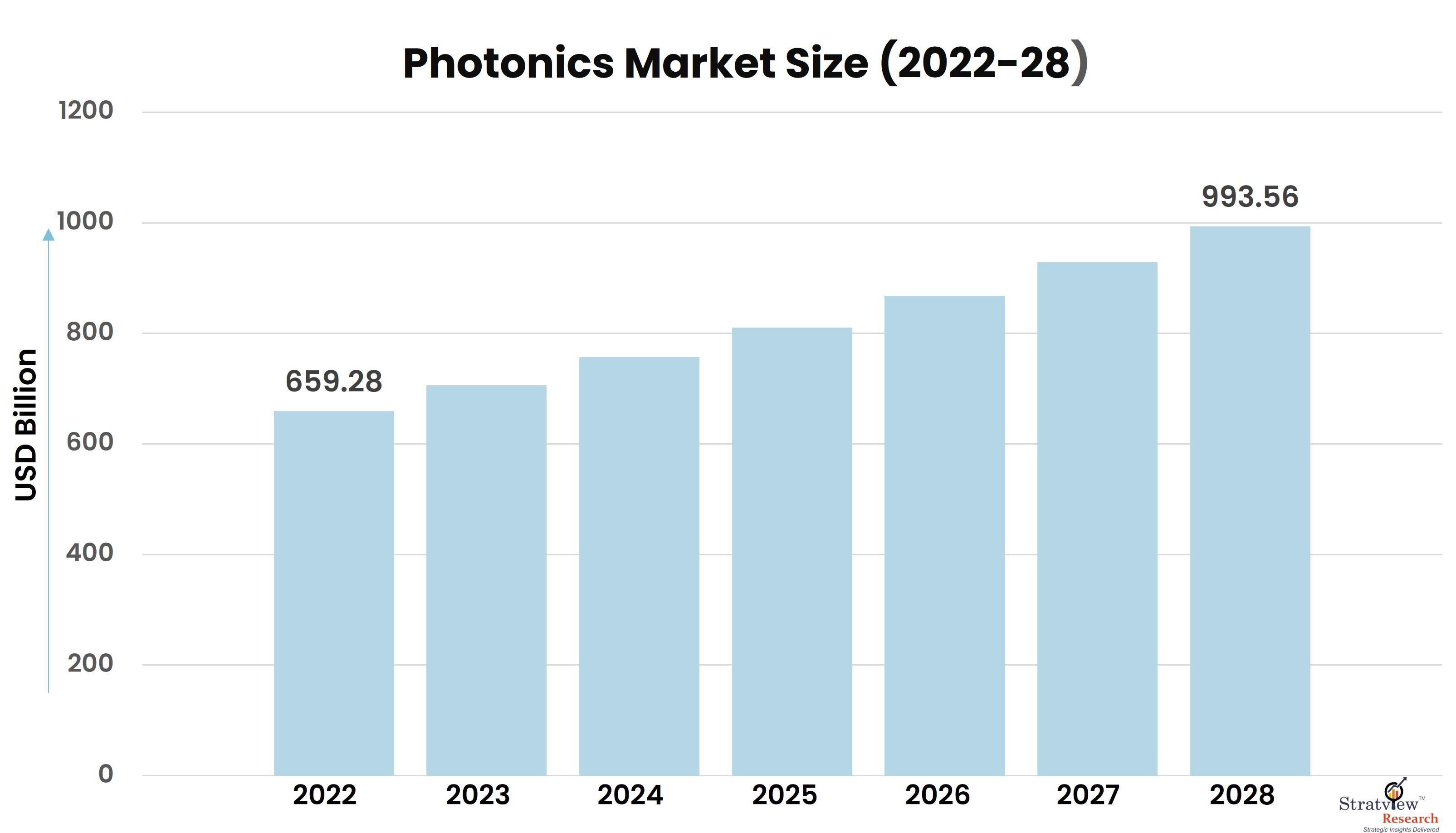The photonics market is poised for substantial growth in 2024, driven by advancements in technology, increasing demand across various industries, and the push towards more sustainable solutions. Photonics, the science and technology of generating, controlling, and detecting photons, has a broad range of applications from telecommunications to healthcare, manufacturing, and beyond. This article delves into the key factors contributing to the growth potential of the photonics market in 2024.
According to Stratview Research, the photonics market was estimated at USD 659.28 billion in 2022 and is likely to grow at a CAGR of 7.05% during 2023-2028 to reach USD 993.56 billion in 2028.
Technological Advancements Driving Innovation
Technological innovation is a significant driver of growth in the photonics market. Recent advancements in optical components, such as lasers, photodetectors, and optical fibers, have greatly enhanced the capabilities and applications of photonics. For instance, the development of high-power, high-efficiency lasers is enabling new applications in manufacturing and materials processing, while advances in photodetectors are improving imaging and sensing technologies.
Moreover, the integration of photonics with other technologies, such as artificial intelligence (AI) and the Internet of Things (IoT), is opening up new possibilities. Smart photonic sensors, for example, can provide real-time data for monitoring and optimizing industrial processes, enhancing efficiency and reducing costs.
Growing Demand in Telecommunications
The telecommunications industry is one of the largest and fastest-growing segments of the photonics market. The increasing demand for high-speed internet and data services is driving the need for advanced optical communication technologies. Photonics enables the transmission of large volumes of data at high speeds over long distances with minimal loss, making it essential for modern telecommunications infrastructure.
In 2024, the rollout of 5G networks and the expansion of fiber optic networks are expected to further boost the demand for photonic components and systems. These developments will not only enhance connectivity but also support emerging technologies such as autonomous vehicles, smart cities, and advanced healthcare solutions.
Advancements in Healthcare and Biophotonics
Healthcare is another sector where photonics is making significant strides. Biophotonics, the application of photonics in medical and biological fields, is revolutionizing diagnostics, imaging, and treatment. Technologies such as optical coherence tomography (OCT), laser therapy, and advanced microscopy are improving the accuracy and effectiveness of medical procedures.
In 2024, the adoption of photonic technologies in healthcare is expected to accelerate, driven by the need for non-invasive and precise diagnostic tools. Innovations in biophotonics are enabling early detection of diseases, personalized treatment plans, and improved patient outcomes. For example, photonic sensors can detect biomarkers in bodily fluids, allowing for early diagnosis of conditions such as cancer and cardiovascular diseases.
Sustainable Solutions and Green Photonics
The push towards sustainability is a significant growth driver for the photonics market. Green photonics, which focuses on the development of environmentally friendly photonic technologies, is gaining traction. Photonics can contribute to sustainability in several ways, such as improving energy efficiency, reducing waste, and enabling renewable energy solutions.
For instance, photonic technologies are used in the development of solar cells with higher efficiency and lower production costs. Photonics also plays a crucial role in energy-efficient lighting, such as LED technology, which consumes significantly less power than traditional lighting solutions. As the world increasingly prioritizes sustainability, the demand for green photonic solutions is expected to rise in 2024 and beyond.
Market Dynamics and Investment Opportunities
The photonics market is characterized by dynamic growth and increasing investment opportunities. Companies and investors are recognizing the potential of photonics to drive innovation and create value across multiple industries. Strategic partnerships, mergers, and acquisitions are becoming more common as companies seek to expand their capabilities and market reach.
Governments and research institutions are also investing heavily in photonics research and development. National and international initiatives are supporting the advancement of photonic technologies, fostering innovation, and creating a favorable environment for market growth.
Conclusion
The photonics market is set for remarkable growth in 2024, driven by technological advancements, increasing demand in key industries, and the push towards sustainable solutions. As photonics continues to revolutionize sectors such as telecommunications, healthcare, and manufacturing, the market's potential will only expand further.
Stakeholders in the photonics industry must stay abreast of emerging trends and innovations to capitalize on the opportunities and navigate the challenges ahead. The future of the photonics market looks bright, with continued advancements expected to drive growth and transform industries worldwide.

